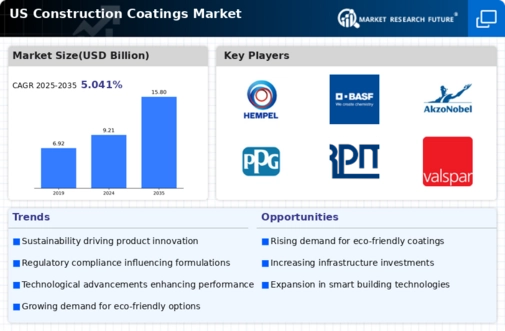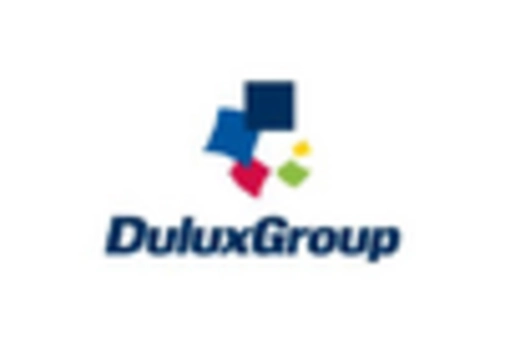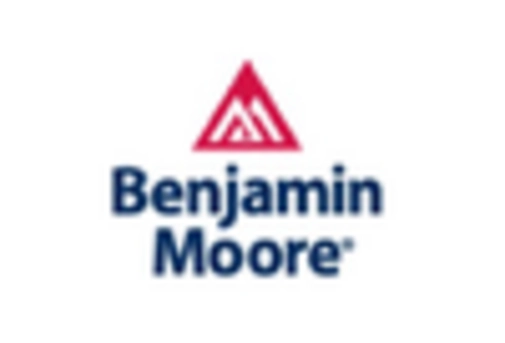The construction coatings market is characterized by a dynamic competitive landscape, driven by innovation, sustainability, and technological advancements. Major players such as Sherwin-Williams (US), PPG Industries (US), and RPM International (US) are at the forefront, each adopting distinct strategies to enhance their market positioning. Sherwin-Williams (US) focuses on expanding its product portfolio through innovative formulations that cater to eco-friendly demands, while PPG Industries (US) emphasizes digital transformation to streamline operations and improve customer engagement. RPM International (US) is actively pursuing strategic acquisitions to bolster its market presence and diversify its offerings, indicating a trend towards consolidation in the industry.
The competitive structure of the market appears moderately fragmented, with several key players exerting influence over various segments. Companies are increasingly localizing manufacturing to reduce lead times and optimize supply chains, which enhances their responsiveness to market demands. This localized approach, combined with strategic partnerships, allows firms to leverage regional strengths and adapt to local preferences, thereby fostering a more resilient market environment.
In November 2025, Sherwin-Williams (US) announced the launch of a new line of low-VOC coatings aimed at the residential sector, reflecting a growing consumer preference for sustainable products. This strategic move not only aligns with environmental regulations but also positions the company as a leader in eco-conscious solutions, potentially attracting a broader customer base. The introduction of these products may enhance brand loyalty and drive sales growth in a competitive market.
In October 2025, PPG Industries (US) unveiled a digital platform designed to enhance customer interaction and streamline the purchasing process. This initiative underscores the company's commitment to digitalization, which is increasingly vital in today's market. By improving customer experience through technology, PPG Industries (US) may gain a competitive edge, fostering deeper customer relationships and driving repeat business.
In September 2025, RPM International (US) completed the acquisition of a regional coatings manufacturer, which is expected to expand its market reach and product offerings. This acquisition strategy not only diversifies RPM's portfolio but also enhances its operational capabilities, allowing for greater market penetration. Such strategic actions indicate a trend towards consolidation, as companies seek to strengthen their competitive positions through mergers and acquisitions.
As of December 2025, the construction coatings market is witnessing significant trends such as digitalization, sustainability, and the integration of AI technologies. Strategic alliances are becoming increasingly prevalent, enabling companies to pool resources and expertise to address complex market challenges. Looking ahead, competitive differentiation is likely to evolve, shifting from price-based competition to a focus on innovation, technology, and supply chain reliability. This transition may redefine market dynamics, compelling companies to invest in R&D and sustainable practices to maintain their competitive edge.






















Leave a Comment